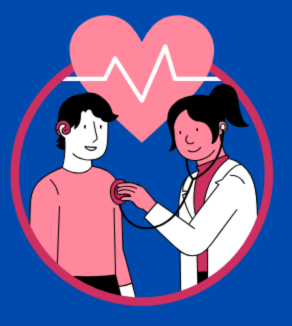Pioglitazone belongs to the thiazolidinediones class of anti-diabetic medicines. Adults with type 2 diabetes mellitus can better regulate their blood sugar levels by taking pioglitazone in addition to diet and exercise.
Proper Name : Pioglitazone Hydrochloride
Chemical Name : Thiazolidinedione monohydrochloride
Brand Name : Pioz / Piohope
How Pioglitazone works :
Pioglitazone increases insulin sensitivity in individuals who are insulin resistant, according to clinical research. Pioglitazone improves insulin-dependent glucose elimination, hepatic sensitivity to insulin, and impaired glucose homeostasis. It also increases cellular reactivity to insulin.
Patients with type 2 diabetes have considerably reduced blood glucose concentrations, plasma insulin levels, and HbA1c values as a result of pioglitazone reduction of insulin resistance.
Pioglitazone’s effects on decreasing blood sugar are believed to persist for over a year, however certain individuals may need to be titrated to larger doses in order to continue the response, according to findings from open label extension studies. The pioglitazone effect occurs itself when weight reduction is not observed.
Common Side Effects :
- Headache
- Muscle pain
- Stuffy, Runny nose
Serious side effects :
- Urinary tract infection ( Painful urination, pink or red urine)
- Blurred vision
- Allergic reaction including rash, itching
- Breathing difficulties
This is not a complete list of possible side effects. Call your doctor for medical advice about side effects.
Mechanism of action of pioglitazone:
Pioglitazone decreases insulin resistance in the periphery and liver, resulting in increased insulin dependent glucose disposal and decreased hepatic glucose output respectively.
Pioglitazone lowers the amount of insulin in the bloodstream while improving glycaemic management. Pioglitazone is not an insulin secretagogue, in compared to sulfonylureas. A potent, highly selective agonist for peroxisome proliferator-activated receptor-gamma (PPARy) is pioglitazone.
PPARy receptors are found in tissues important for insulin action such as adipose tissue, skeletal muscle, and liver. PPARy nuclear receptor activation affects the transcription of several insulin-responsive genes that are involved in the regulation of lipid and glucose metabolism as well as the malnourishment of subcutaneously derived preadipocytes.
In type 2 diabetes patients participating in clinical trials, pioglitazone lowers the hyperglycemia and hyperinsulinemia typical of insulin-resistant conditions, such as type 2 diabetes. Pioglitazone significantly lowers fasting blood glucose (FBG) and hemoglobin A1c (HbA1c a measure of long-term glycaemic control), in individuals with type 2 diabetes.
ABSORPTION :
Pioglitazone is first detectable in the serum within 30 minutes of oral dosing in the fasting rate, and maximal concentrations are seen in 2 hours. Food has little effect on the rate of absorption, although it does slightly extend the period to peak concentration to three or four hours.
DISTRIBUTION :
After a single dose of pioglitazone, the mean apparent volume of distribution is 0.63+_0.41 (mean+_SD) L/kg of body weight. In human serum, pioglitazone is heavily protein bound, mostly to serum albumin. Although with less affinity, pizoglitazone also binds to other serum proteins.
METABOLISM :
Pioglitazone undergoes significant hydroxylation and oxidation-based metabolism. Part of the metabolites is converted to glucuronide or sulfate conjugates.
When human liver microsomes or expressed human P450 are cultured with pioglitazone, M-IV (the hydroxy derivative of pioglitazone) and, to a much lesser extent, M-II are formed. In vitro, at an equimolar concentration to pioglitazone, ketaconazole inhibited up to 85% of the hepatic metabolism of pioglitazone.
Pioglitazone exhibited no influence on the responses mediated by CYP2C8 and CYP3A4-expressing human liver microsomes at concentrations higher than therapeutic levels.
EXCRETION :
15% to 30% of the pioglitazone dosage is recovered as metabolites in the urine after oral treatment. Pioglitazone is mostly eliminated by the kidneys as metabolites and their conjugates, with very little of the medication being eliminated unaltered. It is assumed that the majority of the oral dosage is either eliminated in the feces or excreted into the bile as metabolites and removed. Pioglitazone and total pioglitazone had respective mean serum half-life of 3 to 7 hours and 16 to 24 hours.
DOSAGE :
Use the medicine exactly as directed.Follow all directions on your prescription label and read all medication guides or instruction sheets.
What happens if I miss a dose?
Pioglitazone should be administered as soon as possible if a dose is missed at the scheduled time. The missed dose should be avoided and treatment should resume with the next planned dose if it is too near to the time of the following dose.
FAQ FOR PIOGLITAZONE :
Can Pioglitazone cause weight gain?
Weight gain is a typical side effect of pioglitazone and may be dose-related. The buildup of fat may be the cause of this weight gain. However, it might be brought on by the body’s retention of water in heart failure patients. Thus, it’s essential to monitoring weight in those with heart failure.
Can Pioglitazone cause bladder cancer?
Although it is extremely uncommon, pioglitazone may raise the risk of bladder cancer. If, while taking this medication, you encounter blood in your urine, pain when urinating, or an unexpected need to urinate, contact your doctor immediately. Patients who now have bladder cancer or who have had bladder cancer in the past should not use pioglitazone.
Can Pioglitazone cause heart failure?
Fluid retention brought on by pioglitazone has the potential to worsen or accelerate heart failure. When treating patients who have at least one heart failure risk factor (old age, coronary artery disease, prior heart attack), the doctor typically starts with the lowest dose that is currently available and raises the dose gradually. Using pioglitazone in conjunction with insulin increases the risk of heart failure.
